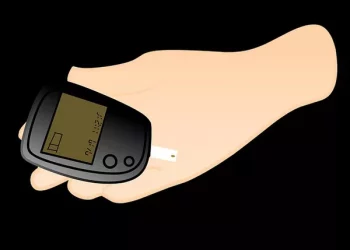As the demand for advanced diabetes and weight loss treatments rises, the focus on improving injection techniques is becoming increasingly crucial. While drugs like GLP-1s have transformed the diabetes care landscape, many patients are not receiving adequate guidance on how to properly administer these injectable medications.
Pasha Javadi, Senior Director of Medical Affairs at Embecta, a Becton Dickinson spinoff specializing in syringes and pen needles, highlighted the gap in education around injection practices despite the billions spent on developing these life-changing drugs. He emphasized that while healthcare professionals are often well-versed in the drugs themselves, the proper administration of the medications is frequently overlooked. “The injection part of administering the drug is most of the time overlooked or considered a given,” Javadi explained.
The surge in prescriptions for both traditional insulin and newer medications like GLP-1s has been paralleled by a lack of education on how to use them effectively. This knowledge gap, according to Javadi, means that many patients don’t fully benefit from their treatments. In response, a team of international diabetes specialists, including Javadi, has worked to update the guidelines for insulin and non-insulin injections, originally published in 2016. These updated guidelines, issued by the Forum for Injection Technique and Therapy Expert Recommendations (FITTER), incorporate new technologies and medication options while improving communication between healthcare providers and their patients.
One of the main challenges for patients using GLP-1s, a popular treatment for both diabetes and obesity, is that many have never been trained on proper injection techniques. Not all syringes and needles are the same, and using the wrong ones can lead to improper injections that may affect glycemic control. “Not enough time is given to help someone understand how to get the most out of the pharmaceutical product they’re being prescribed,” said Ginny Blocki, Senior Vice President of Strategy at Embecta.
As healthcare providers work to bridge this education gap, the pharmaceutical and medtech industries are collaborating more closely to ensure that patients receive the full benefit of their medications. Structured training for healthcare professionals and educational programs for patients are essential to ensuring that injectable treatments are used correctly and effectively.
Despite the rise of newer drugs like GLP-1s, insulin remains the cornerstone of diabetes treatment, especially for Type 1 diabetes. Embecta, a company with over 100 years of experience in injection devices, continues to support both insulin delivery systems and the growing market for GLP-1s. According to Blocki, staying updated on both traditional and new drug delivery technologies is vital to providing a holistic patient experience.
The collaboration between pharmaceutical companies and medtech developers is key to improving the injection process. By ensuring that patients are properly educated on how to use their medications, these industries can improve the overall treatment experience and outcomes. As Blocki pointed out, it’s not just about getting a prescription but about ensuring that patients understand how to use it effectively from start to finish. “How do you satisfy [a patient’s need] from the very beginning to the very end with a complete knowledge of what has to be done and how to do it? That can be different for every patient.”
The evolving landscape of diabetes treatment requires a joint effort to ensure that both the technology and education surrounding injectable medications evolve together.
Related topics:
Abbott’s Diabetes Device Sales Surge 27% in Q1, Fueling Strong Quarterly Performance
Pharmacy Students Gain Empathy Through “Living with Diabetes” Program
Understanding Type 5 Diabetes: Causes, Symptoms, and Prevention Tips

























